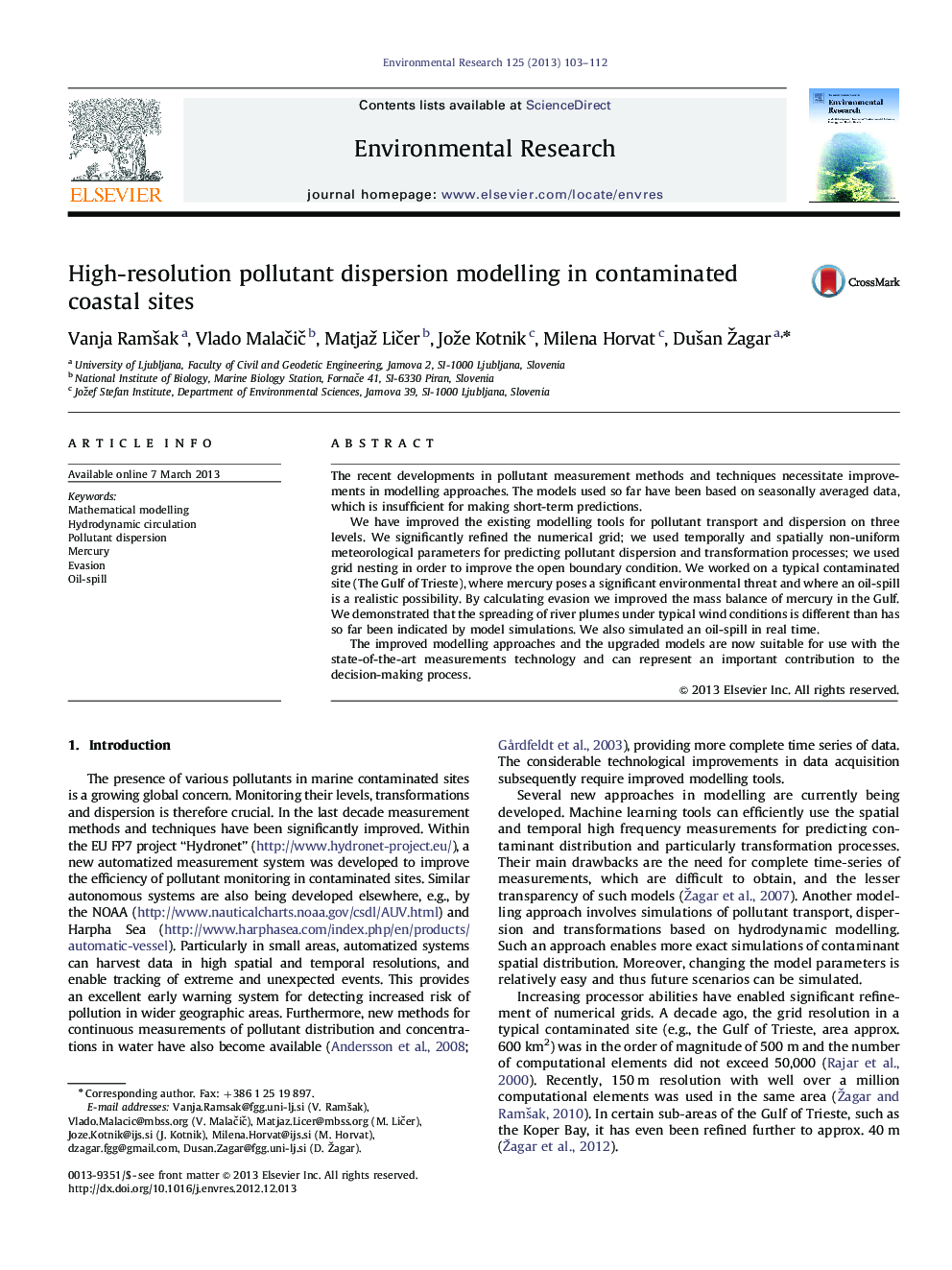| Article ID | Journal | Published Year | Pages | File Type |
|---|---|---|---|---|
| 4469850 | Environmental Research | 2013 | 10 Pages |
The recent developments in pollutant measurement methods and techniques necessitate improvements in modelling approaches. The models used so far have been based on seasonally averaged data, which is insufficient for making short-term predictions.We have improved the existing modelling tools for pollutant transport and dispersion on three levels. We significantly refined the numerical grid; we used temporally and spatially non-uniform meteorological parameters for predicting pollutant dispersion and transformation processes; we used grid nesting in order to improve the open boundary condition. We worked on a typical contaminated site (The Gulf of Trieste), where mercury poses a significant environmental threat and where an oil-spill is a realistic possibility. By calculating evasion we improved the mass balance of mercury in the Gulf. We demonstrated that the spreading of river plumes under typical wind conditions is different than has so far been indicated by model simulations. We also simulated an oil-spill in real time.The improved modelling approaches and the upgraded models are now suitable for use with the state-of-the-art measurements technology and can represent an important contribution to the decision-making process.
► New developments in environmental modelling are presented. ► High resolution and high frequency meteorological data were used. ► We are now able to simulate pollutant dispersion in real time. ► We calculated Hg evasion in the Gulf of Trieste for the first time. ► Our models now offer support to environmental decision-making.
